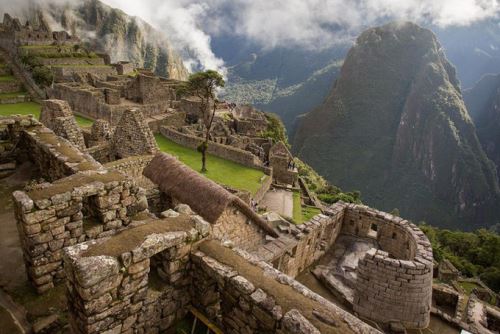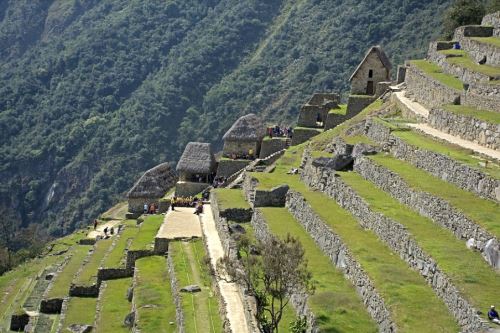The mystery of the usefulness of the stone building —constructed in the early 15th century— has continued until present time.
Within this framework, the surprising and dramatic location of Machu Picchu —on a high ridge, surrounded on three sides by the windy, turbulent Urubamba River some 2,000 feet (610 meters) below— lends itself to universal speculation.

"Scholars are still striving to uncover clues to the mysteries hidden here high in the eastern slopes of the Andes, covered with tropical forests of the upper Amazon Basin. Machu Picchu appears to lie at the center of a network of related sites and trails —and many landmarks both man-made and mountainous appear to align with astronomical events like the solstice sunset. The Inca had no written language, so they left no record of why they built the site or how they used it before it was abandoned in the early 16th century," the renowned magazine remarked.
Landscape engineering
National Geographic Traveler affirmed that landscape-engineering skills are in strong evidence at Machu Picchu. The site's buildings, walls, terraces, and ramps reclaim the steep mountainous terrain and make the city blend naturally into the rock escarpments on which it is situated.
"The 700-plus terraces preserved soil, promoted agriculture, and served as part of an extensive water-distribution system that conserved water and limited erosion on the steep slopes," the publication explained.
It also pointed out that the Inca's achievements and skills are all the more impressive taking into account that when Machu Picchu was built —some 500 years ago— the Inca had no iron, no steel, and no wheels.
"Their tremendous effort apparently benefited relatively few people —some experts maintain that fewer than a thousand individuals lived here," the international journal of tourism added.
Hiram Bingham
In 1911, a Peruvian guide led Yale professor Hiram Bingham up a steep mountainside and into the history books as the first Western scholar to lay eyes on the "lost city" of Machu Picchu. While indigenous peoples knew of the site, the Spanish conquerors never did—a fact which aided Machu Picchu's isolation, and preservation, over the centuries.

Today Machu Picchu is far from isolated. In fact, it is a must-see for any visitor to Peru and the draw that compels many to travel to that nation. Machu Picchu's management challenge is preservation of the site while making it accessible to all those who hope to experience an incredible part of Inca history, the magazine highlighted.
How to get there
On his first trip to the site Hiram Bingham walked for six days. Today many choose to follow in his footsteps by hiking to the ruins on the legendary Inca Trail.
"It's an experience like no other, but one no longer necessary. Train trips from Cusco take only a few hours," the National Geographic Traveler stressed.
Editor's note: Based on information published by the National Geographic Traveler.
(END) LZD/MAO/MTS/MVB